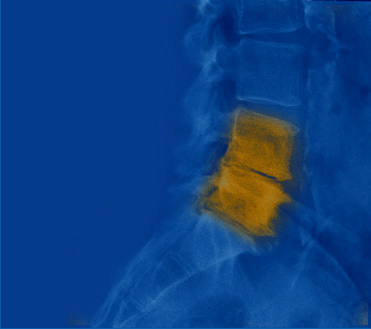
When discs weaken, lose fluid and stiffen, and flatten over time, we talk of disc degeneration. The deterioration reduces the disc’s ability to act as a shock absorber and increases its tendency to tear. Overall, disc degeneration not only causes pain, but also reduces body function and, in the process, quality of life.
Disc degeneration and resulting osteoarthritis of the spine aren’t normal occurrences and aren’t directly related to aging.
Rather, the risk of disc degeneration stems from several factors, including smoking, poor nutrition, repeated impacts, working conditions, long-term consequences of a major accident, as well as wear and tear from certain sports.
For instance, because of its much greater impact or pressure on the spine, jogging puts people at considerably higher risk than does swimming.
Typical symptoms of lumbar (lower-back) disc degeneration
- Constant pain
- Occasional sharp pain, as with a lower-back strain and torticollis (painful neck stiffness)
- Burning, throbbing or numbness radiating to the arms or legs (giving the impression that the sciatic nerve is irritated and too short)
- Difficulty bending down to tie your shoes or put on your socks
- Limited head movement
- Weakness in one or both legs
- Repeated lower-back (lumbar) strains
- Recurrent painful neck stiffness (torticollis)
Don’t wait in pain. Call us (819-205-2757) to schedule a thorough, targeted examination to see if we can help you, just as we’ve done for so many of our patients wrestling with disc degeneration.


